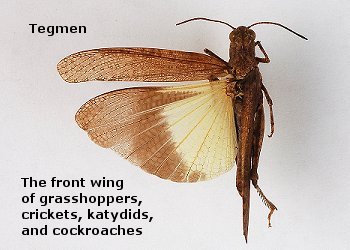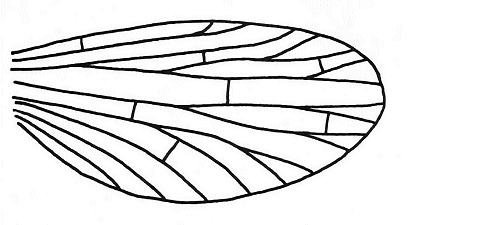Wings
Insects are the only invertebrates that can fly. Their wings develop as evaginations of the exoskeleton during morphogenesis but they become fully functional only during the adult stage of an insect’s life cycle. The wings may be membranous, parchment-like, heavily sclerotized, fringed with long hairs, or covered with scales. Most insects have two pairs of wings — one pair on the mesothorax and one pair on the metathorax (never on the prothorax). Wings serve not only as organs of flight, but also may be adapted variously as protective covers (Coleoptera and Dermaptera), thermal collectors (Lepidoptera), gyroscopic stabilizers (Diptera), sound producers (Orthoptera), or visual cues for species recognition and sexual contact (Lepidoptera).
In most cases, a characteristic network of veins runs throughout the wing tissue. These veins are extensions of the body’s circulatory system. They are filled with hemolymph and contain a tracheal tube and a nerve. In membranous wings, the veins provide strength and reinforcement during flight. Wing shape, texture, and venation are quite distinctive among the insect taxa and therefore highly useful as aides for identification.



